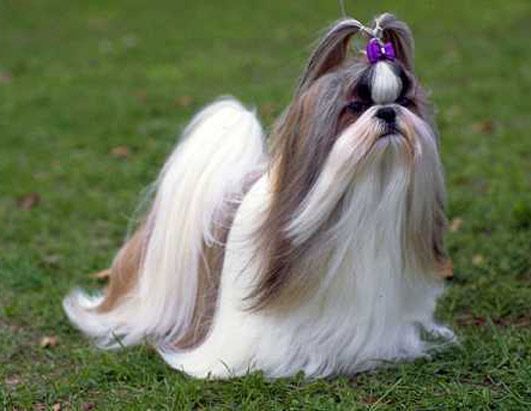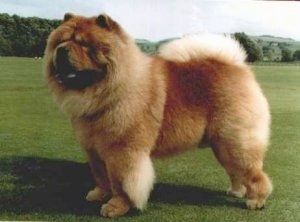This thread is based on Shishi Baguazhang石獅八卦掌.
Shishi Baguazhang is thought to be extinct for over 100 years, it did not come to be distinct from other Baguazhang styles until the 19th century most likely in Beijing. Around 1850, it became distinct from Yin style which it may have been based off or offshoot from.
The history is/was kept guarded and going pass 5th master the art's history becomes murky.
Though the art is distinct from Yin style Baguazhang, it shares elements from if.
Shishi Baguazhang uses the Lion form taken from Yin Bagua and combines the boxing from gouquan狗拳 or Dog boxing.
The style is not unfinished so its orgins may still come to light with further scholarly effort.
The current line is headed by Alex or ZenJael.
If ZenJael would like to add more to this thread and flesh out what Shishi Baguazhang is it would be great.
Maybe we can find out more about Shishi Baguazhang. It might be possible that others in China have heard of it or maybe there is a reference in some
of the old boxing manuals in Chinese.
I would be interested in its exploration further, historically. Frankly, it's murky past my teacher, who, granted, could have merely taken techniques from Yin style and merged them with others, or altered them toward his own desires. Who knows, but I would like to think that he was not fraudulent, and he never seemed so to me when practicing with Master Cheung prior to his passing.
I think, after further consideration this style should continue to be considered extinct. In no way am I master of it, or even near my own teacher's level, and may never be. As my own learning is incomplete, I do not think if I were to teach it, it would be as it was meant to be, so I do not believe I will be doing so.
I will however go into the philosophy of how it operates.
Shishi baguazhang, or guardian style, focuses on bringing the opponent to the ground, while maintaining control. It draws from, what I can tell now, Yin style lion techniques, combining them with ground techniques from Dog style. The lion style focuses on hand techniques to 'ground' the opponent, accompanied by low strikes beneath the waist which assist in the grounding. Combined with dog style's ability to retain control on the ground, it is very difficult for an opponent to get back on their feet.
Essentially, the most basic grounding which comes to mind would be from a front hand strike. The motion is as if a punch to the head, but instead it moves past it, then arcing to connect with the neck and utilize the momentum to drag the opponent to the ground. Instead of striking, it essentially pulls them. The low kicks would meanwhile be utilized to kick out their legs, or sweep them to the ground at the same time. To be honest, the form has a lot less dog than you'd think. Mainly only if you also get pulled to the ground.
I am unsure as to where Master Cheung learned his Aikido- all I have heard is it was in Korea.
Alex -- who was your teacher in Shishi Baguazhang? As I recall, you don't know much of his lineage -- but you do know at least that much, right? Several people have suggested that, with a name, they might be able to confirm some things. Otherwise -- you start to sound like the "learned ninjitsu from a secret master who fled Japan and taught me in his backyard" folks...
I don't disagree with this. But understand where I am coming from on this board where when I have given names, people have then sought out those teachers, and either contacted them, or advocated it, when that kind of response was not welcome on the part of my own teacher's. There comes a line between varification and stalking, which on this board doesn't actually seem to be clear. I realize some will disagree with this- but when I have lost employment, and have gotten angry calls from respected teachers, you begin to tread a bit more cautiously. So ah, I don't mind if people consider this style to be of the case. I do, but I would rather people think it a phony style, than it to be considered real and disparaged as worthless, through any fault of my own. I don't feel I have anything to bring to the table I need to prove- there are many styles of Bagua which are delineated from Yin. Even if my teacher was sincere in the history he conveyed to me, that does not mean at some point one of his teacher's teachers didn't hijack the art from Yin style, which I suspect is the more likely case.
I'll be honest- there is nothing secret or sacred about this style, and I apologize if I have made it come off as so. How master cheung, and his teacher's went about the teaching is no different than a familial style I have encountered while training in Chung Do Kwan; we had a visitor who, though a second dan, performed a style none of us had ever recognized, and I have never seen again since. He was a friend of a student there, who had been invited to an exam. When inquired as to his training, his only explanation was he had been trained by his father, in a style of karate (I did not hear the name, though I wish I had) his family had been practicing for at least as far back as his great-grandfather.
We would probably be surprised how many styles we have never heard of which do exist; they just exist in a very minimal form, with very few people practicing them still. Every now and again you will hear about one. We may be surprised to find that many of the arts we consider extinct may actually not be, on occasion. Time will tell.
Here is my opinion on shishi baguazhang, however- It is a style which exists. It is unvarifiable as to whether it is authentic Baguazhang, as it's claims are disputed between what are publicly accepted historically for baguazhang. And generally speaking, it is more often the case it is not authentic when there is this kind of contradiction. It is highly likely that while a style of Baguazhang, it is one which drew from yin style, in particular it's lion branch, and is not its own unique branch, as it has been espoused to me. The greatest evidence of this to me is in the instruction from my teacher that to complete shishi I should train seperately in Yin and dog style, and focus on the lion palm forms, in addition to the dog style. It is, historically, a privately taught martial art, and I have been told is considered extinct. That being said, since it appears to not even have been heard of... I think it hard to call it even 'considered' extinct, to be fair. Regardless it's origins, I have seen the efficacy of its techniques against at least myself, and that stands as qualification alone that it was worth learning, to me.
If I had a video, I'd post it. I'll get on making one if anyone would like. Perhaps if only that style were viewed (instead of it jumbled together with a multitude of other arts as in the video I posted contains) we would better be able to pick it apart to discover it's origins. Even if fraudulent, I myself am curious to get a real answer out of this. If it turns out to be yin style, well, there you go; we have our answer. But it would be nice to find out where and how this was done, and why. I am a history major, so this kind of clarification is what I'm all about.
In martial arts we have to be careful about what we learn, for specifically this reason. You never know when what you are learning is ********su, and it would surprise me more to learn that none of the myriad styles I have dabbled in were fake, than to hear that a few were, which I expect. Though, I must add at this point we must question what we mean by 'fake'. Are we referring to a false history, or are we referring to the non-efficacy of its techniques? Because while the former could be true of this style, the latter is most definately not.
So even if it has a ********su history (which I think could be the case) does that actually detract from its worth as a style? There are many styles without a defined history or origin. Taijiquan is one such example, from what I understand as being as old as 1500 B.C.


